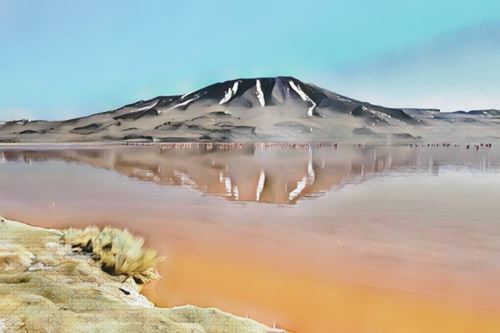
This will change the area irreversibly at immense cost to the habitat and ecosystem! Please have a look at our example itineraries There are plans to build a large salt factory on the shores of at the lake. The lake’s steeply alkaline waters are a graveyard for thousands of small birds.īest time to spot birds at Lake Natron: the flamingos of Natron lay their eggs normally during the end of the dry season in September and October but the hatching starts in the early parts of the wet season and climaxing by December. The long-legged waterfowl may flourish, but to any other living creature, Lake Natron is hell on earth. The Rift Valley’s Lake Natron is the chosen mating ground of the endangered lesser flamingo. During the rainy period (November-May), some activities may be cancelled due to heavy rains. You won’t find wildlife here, but the tracks are good. The weather at Lake Natron is primarily hot and mostly dry, and the coolest months are June through August, but some guests find these temperatures tropically warm. The period June-October is the best time for walking and hiking tours. If rain has fallen up in the Rift Valley, water streams over the escarpment, forming waterfalls and streams of sparkling clear water which one can swim in.īoth walks are included when visiting Lake Natron. Hike to the Engaresero rivierĪ Maasai guide will lead you along the ridges of the lake to the source of the Engaresero River. In the dry season, you feel as if you are in an apparently uninhabited, dessert-like dream world. The quiet calmness returns.Ī Maasai guide will take you for a walk along the shores of the lake. And as suddenly as they arrive, they disappear in spectacular waves of pink. Each year, around February or March, enormous flocks of gaggling birds converge on the salt lake. It is also the most important breeding ground worldwide for the Lesser Flamingo. In the dry season, a bacteria turns the dry surface red. Breeding ground for the endangered Lesser Flamingo.However, in the dry season, the view becomes almost a moon landscape, in which bright pink cactus blooms contrast against the dry, dusty rocks.

The lake fills up from mineral-rich water flowing down from the Great Rift Valley.

Sometimes one can even see the lava stream from Ol Doinyo Lengai, a sacred place to the Maasai. Majestic and active volcano as a prominent backdrop.If rain has fallen, or not if the millions of flamingo have arrived, or if the lake is still dry, it is an experience which cannot be replicated anywhere else in the world! This image, which was captured on 3 February 2019, is also featured on the Earth from Space video programme.Off the beaten track away from the masses! Real adventure seekers who visit Lake Natron, will be rewarded with a unique, near magical experience. The mission’s frequent revisits over the same area and high spatial resolution allow changes in inland water bodies to be closely monitored. This mineral is collected and used for glass manufacturing, fabric dyeing and paper production.Ĭopernicus Sentinel-2 is a two-satellite mission to supply the coverage and data delivery needed for Europe’s Copernicus programme. The mineral trona can also be found in the lake’s waters. The lake is over 30 km long and has a notably high salt content, and in some places the salt is up to 40 metres thick.


The pink-coloured waters of Lake Magadi can also be seen at the top of the image. The extinct Gelai Volcano, standing at 2942 m tall, is visible southeast of the lake. In fact, the lake is home to the highest concentrations of lesser and greater flamingos in East Africa, where they feed on spirulina – a green algae with red pigments. The saline waters make the lake inhospitable for many plants and animals, yet the surrounding salt water marshes are a surprising habitat for flamingos. Despite its dark colour in this image, Lake Natron is often bright red owing to the presence of microorganisms that feed on the salts of the water. Lake Natron is around 60 km long and is fed mainly by the Ewaso Ng'iro River. The Copernicus Sentinel-2 mission takes us over two saline lakes in East Africa: the larger Lake Natron in northern Tanzania and the smaller Lake Magadi, just over the border in Kenya.


 0 kommentar(er)
0 kommentar(er)
